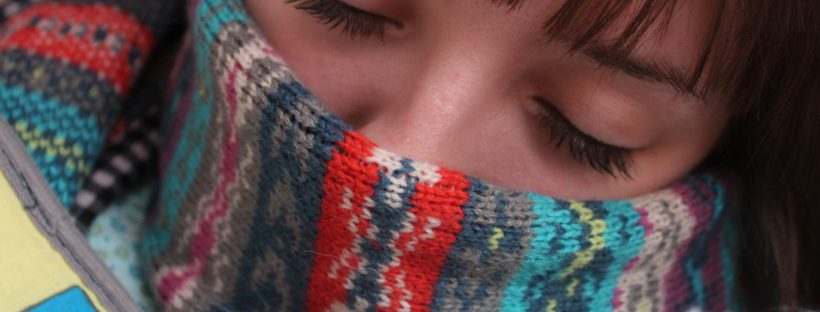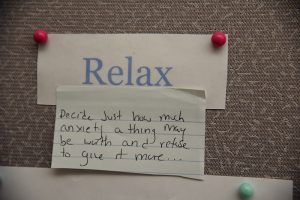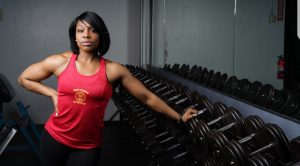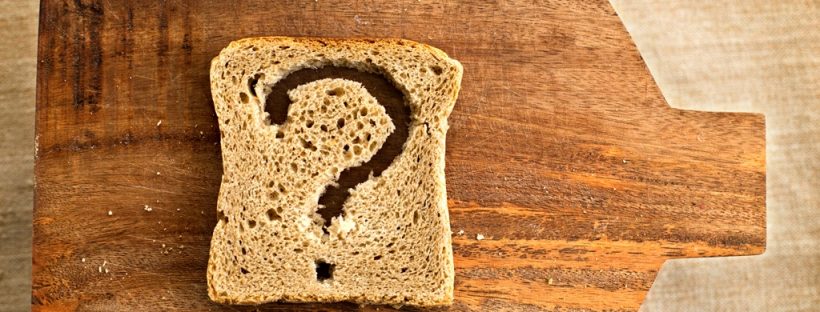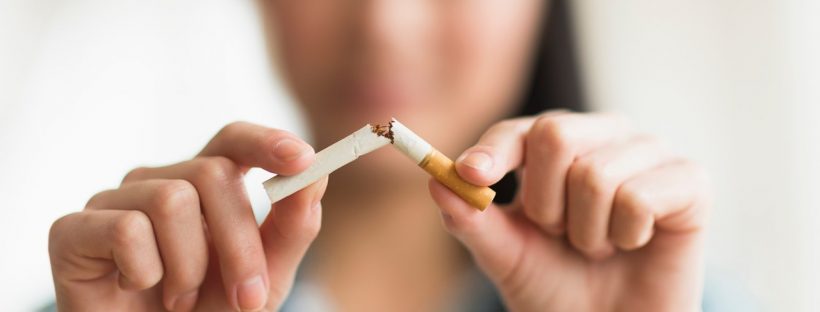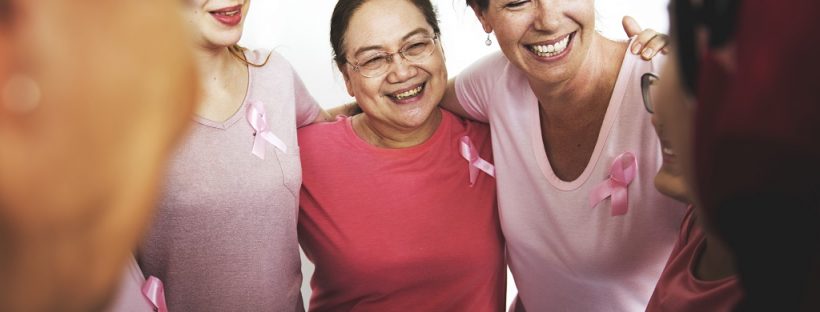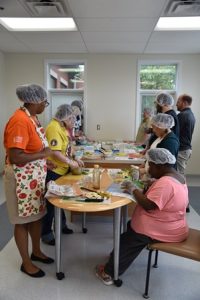Before you decide whether or not to have your pre-teen vaccinated against HPV (human papillomavirus), you may want to read about Christine Baze’s battle with cervical cancer.
Don’t have kids that age? You may still want to read Christine’s story. The National Cancer Institute says HPV is so common that nearly all sexually active men and women get the virus at some point in their lives.
While in most cases HPV goes away on its own and doesn’t result in any health problems, it can cause genital warts and cancer in women and men. The HPV vaccine provides protection against cervical, anal, oropharyngeal (throat and mouth), penile, vaginal and vulvar cancer and genital warts.
Here’s Christine’s story.
It was spring 2000 and Christine was on top of the world, having quit her job as a marriage and family therapist to devote herself full-time to a career in music. Happily married, she and her husband dreamed of starting a family someday.
She showed up for her regular gynecologist’s annual appointment in March figuring it would be the same old routine visit. After all, her Pap smears had been “normal” the last 13 times.
This time, however, her Pap smear came back “abnormal.”
Her doctor explained she had abnormal cells on her cervix, and if left untreated, they could develop into cancer. He explained the cell changes were a result of HPV that she probably had contracted years ago. Although there’s now a vaccine for HPV, the Food and Drug Administration didn’t approve it until 2006, years after Christine unknowingly had contracted the virus.
Cancer was a worst case scenario, her doctor advised her, but referred her to an oncologist specializing in gynecological cancer.
Otherwise healthy, Christine told her doctor, “There’s no way I have cancer,” but agreed to see the specialist.
On April 18, 2000, Christine’s life changed forever. The diagnosis came back cervical cancer.
Her full-time job was surviving
Just months before, Christine had put her professional life on hold to pursue her passion: singing, performing and writing music. Now, her full-time job was surviving.
On April 28, 2000. Christine underwent a radical hysterectomy that removed her uterus, cervix and connective tissue. The surgeon left the one healthy ovary intact, in case Christine and her husband wanted to try in vitro fertilization with a surrogate mother. Later, they did try, but it failed.
“No little Crissi for this Christine,” she remembers thinking.
“You really don’t know how much you want something until you can’t have it,” Christine, a native of Elmira, New York, told Syracuse University students at a sexual health awareness day on campus February 2017.
Fried Inside and Out
Surgery was only the beginning. External radiation five days a week for five weeks ran concurrent with four rounds of chemotherapy, and then was followed by three rounds of internal radiation.
She felt fried inside and out, emotionally drained and spiritually wounded.
As a licensed family and marriage therapist, Christine knew what she needed to do and did it. She got her own therapist, joined a support group, tried different medications and even got a puppy.

Christine’s dog, Harold
Although Christine survived the cancer, her marriage didn’t weather the fall-out.
Harold and Maude Wake Her Up
A chance viewing of the 1971 cult flick, “Harold and Maude,” was Christine’s call to “kick cancer to the door and begin living again.”
At almost 80, Maude’s zest for life provides a stark contrast to rich, bored 20-year-old Harold’s obsession with death. Eventually, the old woman turns Harold into a believer—and Christine, too.
“No matter what Maude was up against, she prevailed,” said Christine.
“She was a survivor, and so am I.”
Even the movie’s soundtrack by Cat Stevens propelled Christine to run to the piano she hadn’t touched in months. She played the melody and belted out the lyrics to “Trouble”:
“Trouble move away, I’ve seen your face and it’s too much for me today.”
The sunny umbrella that Maude flaunted among a sea of black ones in the movie’s funeral scene led to the name of the nonprofit that Christine founded not long after seeing the movie classic.
Under the shelter of The Yellow Umbrella Organization, Christine talks and sings about something no one wants to talk about: cervical health. She calls the series of concerts The Yellow Umbrella Tour, promoting the HPV vaccine, cervical cancer prevention, and regular screenings and tests for those who may be infected and not know it.
Paint It Yellow
Christine has done 100-plus tour dates and more than 250 events with PAINT IT YELLOW to talk about HPV and cervical cancer prevention. The venues are middle and high schools, colleges, community settings, workplaces and clubs. She also appears in the highly acclaimed documentary, Someone You Love: The HPV Epidemic.
“Christine has a kind of radiance about her,” said Melissa Klinko who was instrumental in bringing the Yellow Umbrella tour to Elmira under the auspices of her employer, Excellus BlueCross BlueShield. Back in her hometown, Christine lit up the stage where she’d once performed as a student.
“She turned a life-threatening illness and devastating situation into a positive experience that touches the hearts and minds of young, old and in between,” said Klinko. ”Who knows how many lives she’s saved because of her message?”
HPV Vaccination Rates Low
The CDC reports that nationwide six of 10 parents are choosing to get the HPV vaccine for their children.
In states where vaccination rates are lowest, cervical cancer rates are the highest, according to another national study.
But the number of cases of cervical cancer and death by cervical cancer has decreased in New York state over the last 40 years thanks in large part to regular Pap smears and HPV vaccinations.
“Many parents would tell me that they didn’t think they needed to worry about that right now with their adolescent son or daughter,” said Nicholas Massa, M.D., a pediatrician and medical director at Excellus BlueCross BlueShield.
“However, adolescents should be vaccinated before they become exposed, because protection is greatest before he or she has initiated any type of sexual activity with another person. And, despite how much we try to guide our children and despite how open a relationship we may have with them, we will not likely know when that first time will be.”
Some parents may believe that if they have their children vaccinated against HPV that their kids will begin engaging in sexual activity, especially at a younger age, but studies don’t bear that out, he said, citing one published in Pediatrics.
Dr. Massa also said providers may need to become more comfortable talking about it with their patients and their parents.
For those too old for the vaccine, education and prevention are the first line of defense for women and men, Dr. Massa said, advising that women should follow the Choosing Wisely® recommendations for screenings. Even people with only one lifetime sex partner can get HPV.
“So the risk is real for all.”
It didn’t take my voice.
Although music and The Yellow Umbrella are her passions, Christine continues to work part-time as an outpatient mental health therapist at Mass General for Children at North Shore Medical Center in Salem, Massachusetts. Troubled teens are her specialty.
“Cervical cancer took lots of bits and pieces of my body,” Christine said, “but it didn’t take my voice.”
To hear Christine’s “voice” as she educates others about cervical health, watch the following video.
For more information, read 11 Facts About HPV And Cervical Cancer.




